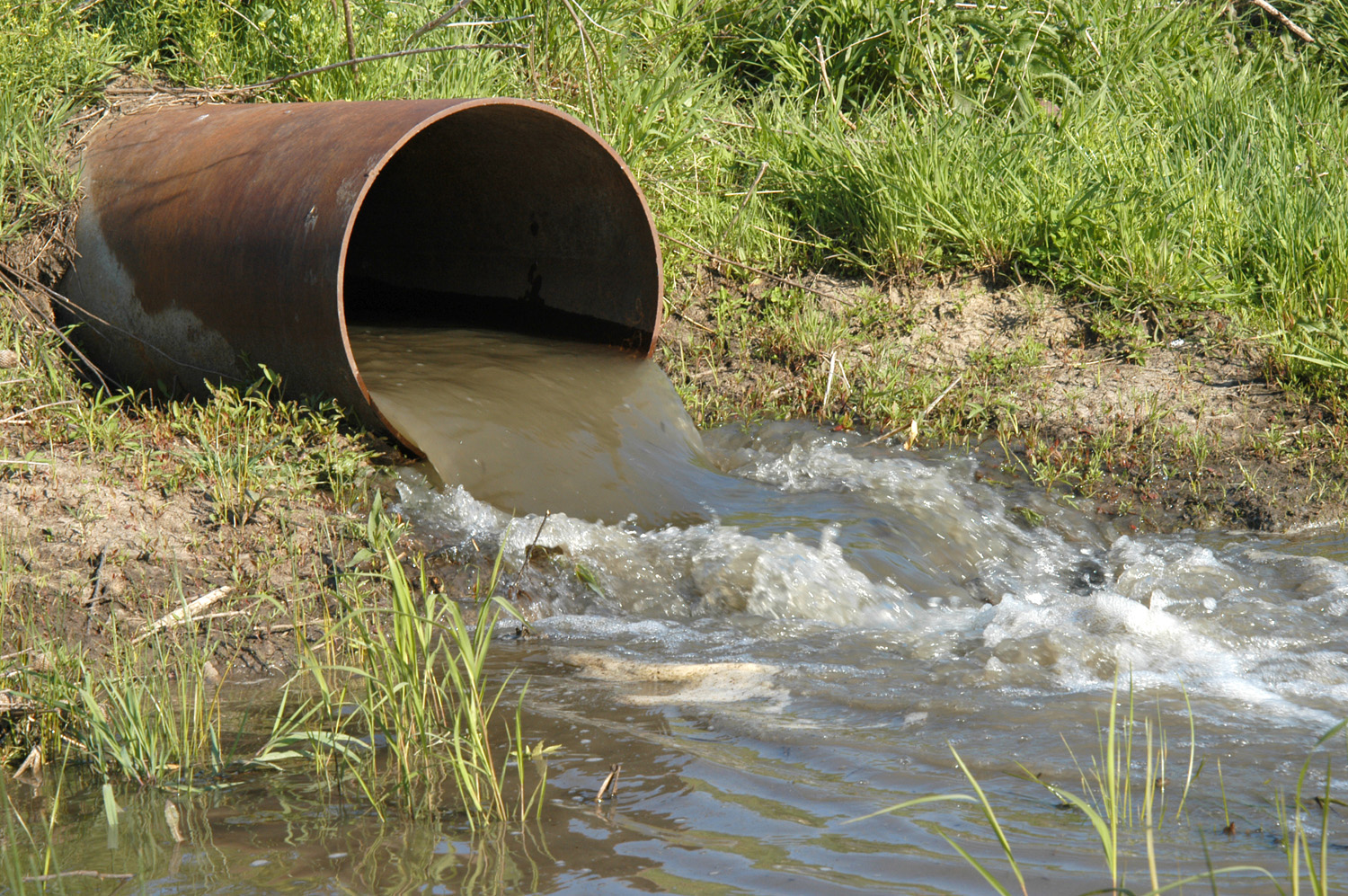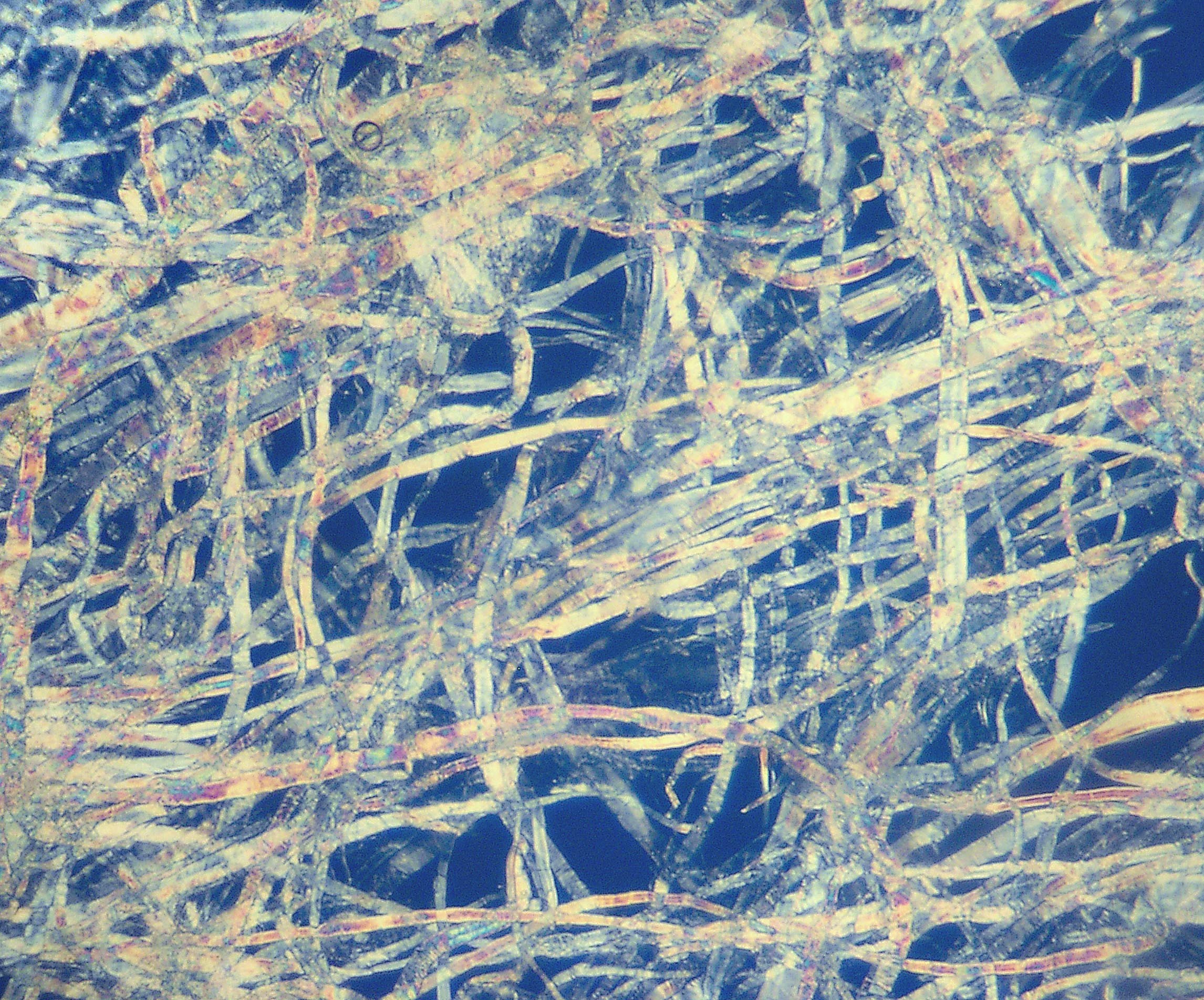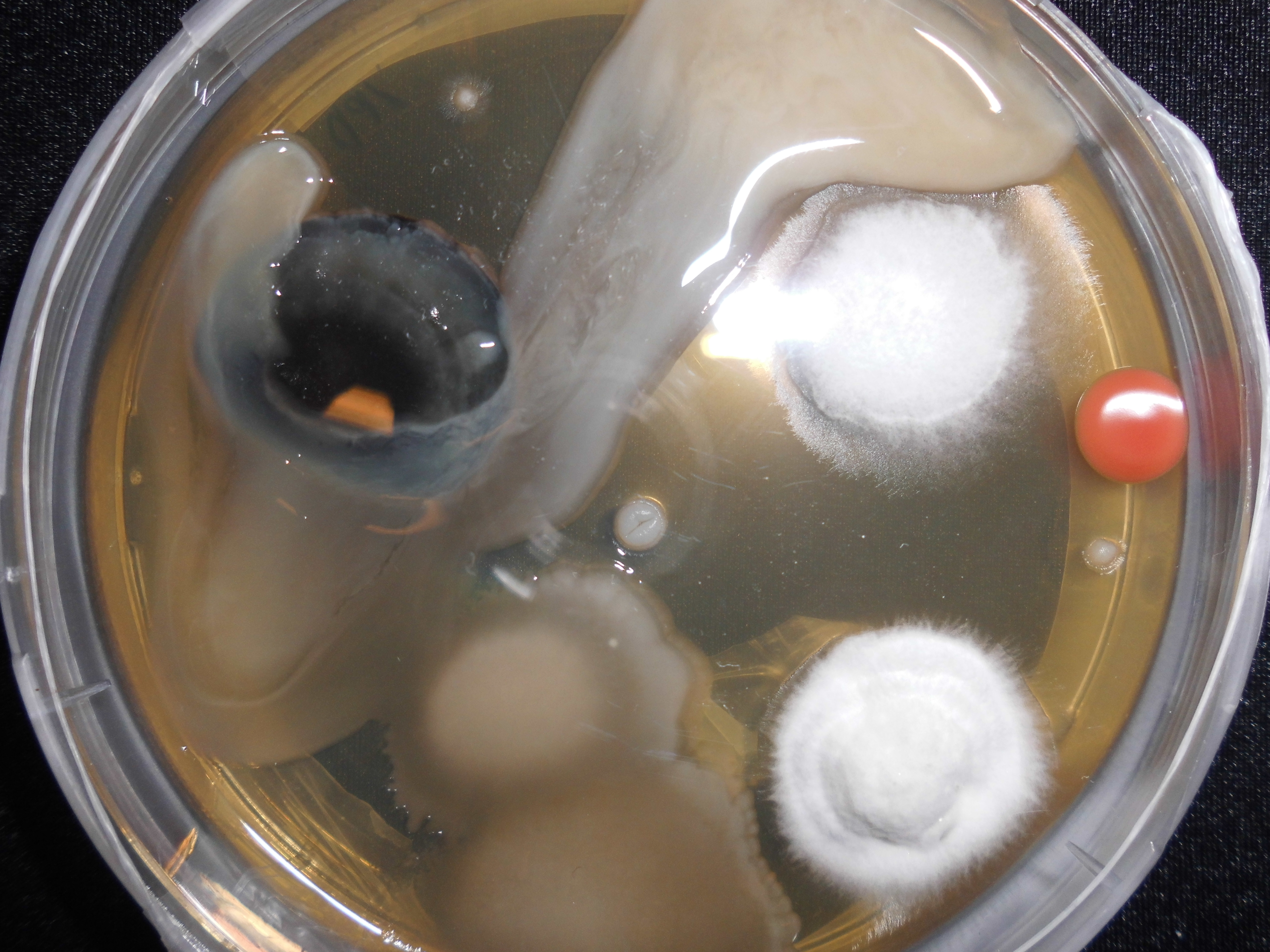|
Fecal Coliforms
A fecal coliform (British: faecal coliform) is a facultatively anaerobic, rod-shaped, gram-negative, non- sporulating bacterium. Coliform bacteria generally originate in the intestines of warm-blooded animals. Fecal coliforms are capable of growth in the presence of bile salts or similar surface agents, are oxidase negative, and produce acid and gas from lactose within 48 hours at 44 ± 0.5°C.Doyle, M. P., and M. C. Erickson. 2006"Closing the door on the fecal coliform assay."'' Microbe'' 1:162–163. . The term thermotolerant coliform is more correct and is gaining acceptance over "fecal coliform". Coliform bacteria include genera that originate in feces (e.g. ''Escherichia'', ''Enterobacter'', '' Klebsiella'', '' Citrobacter''). The fecal coliform assay is intended to be an indicator of fecal contamination; more specifically of '' E. coli'' which is an indicator microorganism for other pathogens that may be present in feces. Presence of fecal coliforms in water may not be di ... [...More Info...] [...Related Items...] OR: [Wikipedia] [Google] [Baidu] |
Facultatively Anaerobic
A facultative anaerobic organism is an organism that makes ATP by aerobic respiration if oxygen is present, but is capable of switching to fermentation if oxygen is absent. Some examples of facultatively anaerobic bacteria are ''Staphylococcus'' spp., ''Escherichia coli'', ''Salmonella'', ''Listeria'' spp., '' Shewanella oneidensis'' and ''Yersinia pestis''. Certain eukaryotes are also facultative anaerobes, including pupfish, fungi such as ''Saccharomyces cerevisiae'' and many aquatic invertebrates such as nereid polychaetes. It has been observed that in mutants of ''Salmonella typhimurium'' that underwent mutations to be either obligate aerobes or anaerobes, there were varying levels of chromatin-remodeling proteins. The obligate aerobes were later found to have a defective DNA gyrase subunit A gene ('' gyrA''), while obligate anaerobes were defective in topoisomerase I (''topI''). This indicates that topoisomerase I and its associated relaxation of chromosomal DNA is requir ... [...More Info...] [...Related Items...] OR: [Wikipedia] [Google] [Baidu] |
Pathogen
In biology, a pathogen (, "suffering", "passion" and , "producer of"), in the oldest and broadest sense, is any organism or agent that can produce disease. A pathogen may also be referred to as an infectious agent, or simply a Germ theory of disease, germ. The term ''pathogen'' came into use in the 1880s. Typically, the term ''pathogen'' is used to describe an ''infectious'' microorganism or agent, such as a virus, bacterium, protozoan, prion, viroid, or fungus. Small animals, such as helminths and insects, can also cause or Transmission (medicine), transmit disease. However, these animals are usually referred to as parasites rather than pathogens. The scientific study of microscopic organisms, including microscopic pathogenic organisms, is called microbiology, while parasitology refers to the scientific study of parasites and the organisms that host them. There are several pathways through which pathogens can invade a host. The principal pathways have different episodic time ... [...More Info...] [...Related Items...] OR: [Wikipedia] [Google] [Baidu] |
Effluent
Effluent is wastewater from sewers or industrial outfalls that flows directly into surface waters, either untreated or after being treated at a facility. The term has slightly different meanings in certain contexts, and may contain various pollutants depending on the source. Definition Effluent is defined by the United States Environmental Protection Agency (EPA) as "wastewater–treated or untreated–that flows out of a treatment plant, sewer, or industrial outfall. Generally refers to wastes discharged into surface waters". The ''Compact Oxford English Dictionary'' defines effluent as "liquid waste or sewage discharged into a river or the sea". Wastewater is not usually described as effluent while being recycled, re-used, or treated until it is released to surface water. Wastewater percolated or injected into groundwater may not be described as effluent if soil is assumed to perform treatment by filtration or ion exchange; although concealed flow through fractured ... [...More Info...] [...Related Items...] OR: [Wikipedia] [Google] [Baidu] |
Paper Mill
A paper mill is a factory devoted to making paper from vegetable fibres such as wood pulp, old rags, and other ingredients. Prior to the invention and adoption of the Fourdrinier machine and other types of paper machine that use an endless belt, all paper in a paper mill was made by hand, one sheet at a time, by specialized laborers. History Historical investigations into the origin of the paper mill are complicated by differing definitions and loose terminology from modern authors: Many modern scholars use the term to refer indiscriminately to all kinds of mills, whether powered by humans, by animals or by water. Their propensity to refer to any ancient paper manufacturing center as a "mill", without further specifying its exact power source, has increased the difficulty of identifying the particularly efficient and historically important water-powered type. Human and animal-powered mills The use of human and animal powered mills was known to Muslim and Chinese paper ... [...More Info...] [...Related Items...] OR: [Wikipedia] [Google] [Baidu] |
Pulp (paper)
Pulp is a fibrous Lignocellulosic biomass, lignocellulosic material prepared by chemically, semi-chemically, or mechanically isolating the cellulose fiber, cellulosic fibers of wood, fiber crops, Paper recycling, waste paper, or cotton paper, rags. Mixed with water and other chemicals or plant-based additives, pulp is the major raw material used in papermaking and the industrial production of other Pulp and paper industry, paper products. History Before the widely acknowledged invention of papermaking by Cai Lun in China around AD 105, paper-like writing materials such as papyrus and amate were produced by ancient civilizations using plant materials which were largely unprocessed. Strips of Bark (botany), bark or Bast fibre, bast material were woven together, beaten into rough sheets, dried, and polished by hand. Pulp used in modern and traditional papermaking is distinguished by the process which produces a finer, more regular slurry of cellulose fibers which are pulled out of ... [...More Info...] [...Related Items...] OR: [Wikipedia] [Google] [Baidu] |
Sewage
Sewage (or domestic sewage, domestic wastewater, municipal wastewater) is a type of wastewater that is produced by a community of people. It is typically transported through a sewerage, sewer system. Sewage consists of wastewater discharged from residences and from commercial, institutional and public facilities that exist in the locality. Text was copied from this source, which is available under a creativecommons:by/4.0/, Creative Commons Attribution 4.0 International License Sub-types of sewage are greywater (from sinks, bathtubs, showers, dishwashers, and clothes washers) and blackwater (waste), blackwater (the water used to flush toilets, combined with the human waste that it flushes away). Sewage also contains soaps and detergents. Food waste may be present from dishwashing, and food quantities may be increased where garbage disposal units are used. In regions where toilet paper is used rather than bidets, that paper is also added to the sewage. Sewage contains macro-pollu ... [...More Info...] [...Related Items...] OR: [Wikipedia] [Google] [Baidu] |
Urban Runoff
Urban runoff is surface runoff of rainwater, landscape irrigation, and car washing created by urbanization. Impervious surfaces (roads, parking lots and sidewalks) are constructed during land development. During rain, storms, and other Precipitation (meteorology), precipitation events, these surfaces (built from materials such as Asphalt concrete, asphalt and concrete), along with rooftops, carry polluted stormwater to storm drains, instead of allowing the water to Infiltration (hydrology), percolate through soil. This causes lowering of the water table (because groundwater recharge is lessened) and flooding since the amount of water that remains on the surface is greater.Water Environment Federation Alexandria, VA; an American Society of Civil ... [...More Info...] [...Related Items...] OR: [Wikipedia] [Google] [Baidu] |
Agricultural
Agriculture encompasses crop and livestock production, aquaculture, and forestry for food and non-food products. Agriculture was a key factor in the rise of sedentary human civilization, whereby farming of domesticated species created food surpluses that enabled people to live in the cities. While humans started gathering grains at least 105,000 years ago, nascent farmers only began planting them around 11,500 years ago. Sheep, goats, pigs, and cattle were domesticated around 10,000 years ago. Plants were independently cultivated in at least 11 regions of the world. In the 20th century, industrial agriculture based on large-scale monocultures came to dominate agricultural output. , small farms produce about one-third of the world's food, but large farms are prevalent. The largest 1% of farms in the world are greater than and operate more than 70% of the world's farmland. Nearly 40% of agricultural land is found on farms larger than . However, five of every six farms ... [...More Info...] [...Related Items...] OR: [Wikipedia] [Google] [Baidu] |
River
A river is a natural stream of fresh water that flows on land or inside Subterranean river, caves towards another body of water at a lower elevation, such as an ocean, lake, or another river. A river may run dry before reaching the end of its course if it runs out of water, or only flow during certain seasons. Rivers are regulated by the water cycle, the processes by which water moves around the Earth. Water first enters rivers through precipitation, whether from rainfall, the Runoff (hydrology), runoff of water down a slope, the melting of glaciers or snow, or seepage from aquifers beneath the surface of the Earth. Rivers flow in channeled watercourses and merge in confluences to form drainage basins, or catchments, areas where surface water eventually flows to a common outlet. Rivers have a great effect on the landscape around them. They may regularly overflow their Bank (geography), banks and flood the surrounding area, spreading nutrients to the surrounding area. Sedime ... [...More Info...] [...Related Items...] OR: [Wikipedia] [Google] [Baidu] |
Freshwater Ecosystem
Freshwater ecosystems are a subset of Earth's aquatic ecosystems that include the biological communities inhabiting freshwater waterbodies such as lakes, ponds, rivers, streams, springs, bogs, and wetlands. They can be contrasted with marine ecosystems, which have a much higher salinity. Freshwater habitats can be classified by different factors, including temperature, light penetration, nutrients, and vegetation. There are three basic types of freshwater ecosystems: lentic (slow moving water, including pools, ponds, and lakes), lotic (faster moving streams, for example creeks and rivers) and wetlands ( semi-aquatic areas where the soil is saturated or inundated for at least part of the time). Freshwater ecosystems contain 41% of the world's known fish species. Freshwater ecosystems have undergone substantial transformations over time, which has impacted various characteristics of the ecosystems. Original attempts to understand and monitor freshwater ecosystems were spurre ... [...More Info...] [...Related Items...] OR: [Wikipedia] [Google] [Baidu] |
Gastroenteritis
Gastroenteritis, also known as infectious diarrhea, is an inflammation of the Human gastrointestinal tract, gastrointestinal tract including the stomach and intestine. Symptoms may include diarrhea, vomiting, and abdominal pain. Fever, lack of energy, and dehydration may also occur. This typically lasts less than two weeks. Although it is not related to influenza, in the U.S it is sometimes called the "stomach flu". Gastroenteritis is usually caused by viruses; however, gut bacteria, parasites, and fungus, fungi can also cause gastroenteritis. In children, rotavirus is the most common cause of severe disease. In adults, norovirus and ''Campylobacter'' are common causes. Eating improperly prepared food, drinking contaminated water or close contact with a person who is infected can #Transmission, spread the disease. Treatment is generally the same with or without a definitive diagnosis, so testing to confirm is usually not needed. For young children in impoverished countries, pre ... [...More Info...] [...Related Items...] OR: [Wikipedia] [Google] [Baidu] |
Contamination
Contamination is the presence of a constituent, impurity, or some other undesirable element that renders something unsuitable, unfit or harmful for the physical body, natural environment, workplace, etc. Types of contamination Within the sciences, the word "contamination" can take on a variety of subtle differences in meaning, whether the contaminant is a solid or a liquid, as well as the variance of environment the contaminant is found to be in. A contaminant may even be more abstract, as in the case of an unwanted energy source that may interfere with a process. The following represent examples of different types of contamination based on these and other variances. Chemical contamination In chemistry, the term "contamination" usually describes a single constituent, but in specialized fields the term can also mean chemical mixtures, even up to the level of cellular materials. All chemicals contain some level of impurity. Contamination may be recognized or not and may become a ... [...More Info...] [...Related Items...] OR: [Wikipedia] [Google] [Baidu] |







